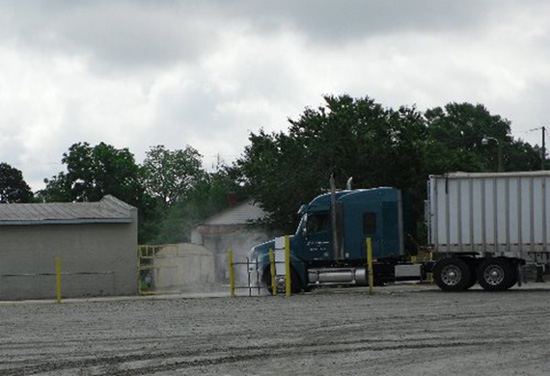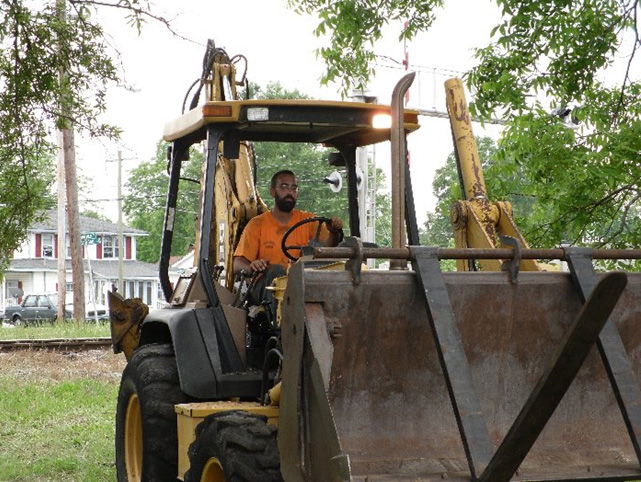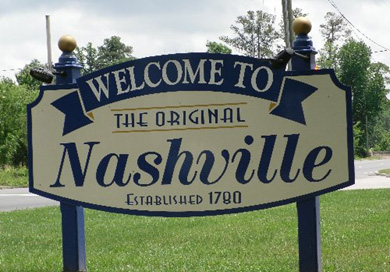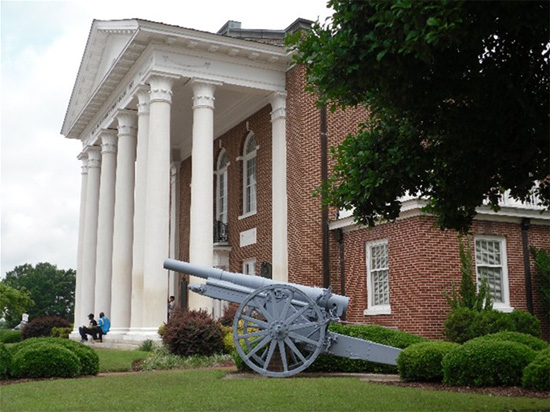
NEWSLETTER
CLNA NEWS – May, 2012
Editor – Kelly Bass
Quarterly Review
2012 was off to a quick start for CLNA. January saw record loadings on both the CLNA main line and the Morehead City line. Overall loadings continued to be strong through March, although they began to fall off in April. The Belhaven line had its busiest first quarter since 2008 and traffic on that line continued to be strong in April. At Morehead City, inbound steel traffic has grown considerably and we began receiving unit trains for PCS in May. Woodchips, stone, and fertilizers have remained strong on the CLNA main line, while we have already handled four unit trains for Perdue on the Nash County line. Work is under way for a new customer siding for Rocky Mount Recyclers in Rocky Mount. We recently purchased a fleet of 20 high-cube scrap cars to support this new business. We are also in discussions with a manufacturing company for a new siding in Middlesex. We expect this project to move forward this Summer.
Work is also continuing on several track projects. We continue installing ties on the Plymouth Sub and between Wilson and Neverson and have tamped most of the Wilson-Greenville line to eliminate some slow orders. In May, we started a track project to replace 2-3 miles of light rail on the Nash County line, as well as adding a 40-car siding for storage traffic.
Family Day at the lake is July 14. We look forwarded to seeing everyone there.
Meet Our Customer
Braswell Milling

Braswell Milling is one of our customers on the Nash County Subdivision in the town of Nashville, NC. Train crews mainly deal with Brian Harris in shipping and receiving to find out what empties he has or if they have loads to give him. They receive corn, limestone, wheat meds, and soybean meal by truck and rail to make their chicken and hog feed. They use over three and a half million bushels of corn a year and more than 25,000 tons in soybean meal producing about 600 tons a day of mash feed five days a week. Mr. Harris tells me he likes getting product in by rail because it’s easier to unload plus there is more of it in one rail car verses one truck. The mill has about twenty employees that include office, shipping and receiving, maintenance, and truck driver personnel. The mill delivers about 75% of its feed in their own trucks with customers picking up the remainder 25%. If I were to stop right there, that information in itself would be impressive, but Braswell is much more than just a mill making conventional feed. They have certified organic feed that customers as far away as Florida and Georgia send trucks to load and take back. They also have customers in Virginia that use the same certified feed. The mill’s objective is to supply feed to chicken houses that produce eggs while also providing service to seven or eight additional outside customers. They are also ISO 14001 certified, which is a higher class of environmental management standards among the industry. These standards are consistent throughout the Braswell Foods Company. They are the second largest of about a dozen franchises producing Egg-Lands Best eggs. Braswell has a lot invested in quality of their product because they have a hand in each process. From the making of the feed, to the making of the eggs, to the delivery of the final product, they are vested in each step and quality starts with the first step. Every truck that comes onto the mill property for delivery has to run through a disinfectant spray to ensure they are not bringing something to the mill that would accidentally cause an issue with Braswell’s feed.

When a truck arrives, the whole truck drives through the sprayer, bumper to bumper
The mill is completely automated. While I was talking with Mr. Harris, he loaded 3 or 4 trucks in a span of about 15 minutes. He would weigh the truck, load the truck with the order, weigh it again, and send him on his way. I’ve seen other mills load trucks but never seen it so fast and efficient. Not only was I impressed with that, but Mr. Harris never got dirty because it was all done from an enclosed office toward the center of the mill with the help of closed circuit cameras and digital readouts. He says they are pleased with Carolina Coastal’s service and had no complaints.
The mill has been at its current location since 1969, but its roots in the community go deeper than that. In 1942 J.M. and E.G. Braswell bought an established mill called Boddie Mill built in 1834 about 5 miles west of Nashville and Braswell Milling was started. In 1956, Ronald and Gene Braswell, sons of E.G., bought into the company after returning from military service. Ronald’s son and present owner, Scott Braswell, joined the company in 1979. Then in 2008 his son, Trey, joined the company. Trey would be the 4th generation of a Braswell carrying the torch in the Braswell Food Company. As you can tell, the name Braswell is a staple in the community and in the industry and hopefully for a long time to come.
Thank You to Mr. Russ Powell of Braswell Milling Company for providing me with the names and dates of the mill’s history and family line.
Meet Our Employees
Philip Reynolds- Track
Philip joined our team in December 2011 to work in the track department. He comes with some experience from Baltimore, Maryland, but cost of living made him seek out opportunities in other areas to raise his family. His previous experience covered 17 miles of track and was more of a switching operation, so coming to our line was “shocking and a big change”. Philip says he loves learning to work on the equipment and is always willing to learn more. He has gotten better using the tie crane and the material handling truck but still needs to practice with the backhoe. He told me he was ok using it, but he wanted to be good at it, not just ok. We joked about unloading ties from gondolas that CLNA had purchased because he had never gotten ties out of them before. He usually put old ties in them and it didn’t really matter how they were stacked, so getting new ties out was an interesting experience. We also talked about how track supervisors would let you operate equipment if you were willing to try. That freedom to try new things has given workers opportunities to learn to do things they may not otherwise have had the chance to learn. I personally have gotten up on a bunch of equipment to learn to operate when I wasn’t working the train for what ever reason. Philip has worked closely with track foreman Danny Dalton and has learned a lot from him. Philip tells me he owes a lot to Danny because he is constantly teaching and showing him things. He says he still has a lot to learn and is more than willing. When I met with Philip, he was putting in switch ties and had just learned how to do it a month or two ago.

Philip and his wife of 3 years, Rebekah, just purchased a new home and have been busy settling in. Philip tells me they have been very blessed with their 3 year old daughter, Sophia, and are expecting a new baby boy in the fall. He thinks they will name him Connor, but they still have some time to narrow it down and choose. Philip told me when he contacted Carolina Coastal about any open positions, it wasn’t long after that he got a call for an interview and received a job. When they came down looking for a place to live, they found a good place in a couple days. Then, when they decided to look for a home of their own, everything fell into place. One reason they wanted to go ahead and get a home now was so they could get settled and ready for the baby.
Philip likes the people he works with and everything he does. He said the work is different day to day because he could be putting in some ties now and the next day he could be cutting some brush from around a bridge. His plans are to retire here with the railroad because he likes the work and his family is so happy with the area and location they have settled into. I asked Philip about his future plans with CLNA and he hopes to continue to learn about track and one day move into a Foreman or Supervisor position. He also wants to go to school to be a track inspector and be able to inspect track, but that wasn’t a priority right now because he still has more to learn with track work.
Along the Rails
Nashville, NC

Nashville calls itself “The Original Nashville”. When Nash County was formed from a part of Edgecombe County it needed a county seat consisting of a courthouse, a prison, and stocks. When the courthouse was completed in 1778 the settlement was then known as Nash Court House. Later it became Nashville in honor of General Francis Nash killed in the Revolutionary War. Nashville remained a small, mainly unchanged town with exception of some taverns, hotels, and opera house popping up in town to cater to stage coach business. When the Wilmington and Weldon Railroad came to town in 1787, the town began to make its mark. Many farmers could bring their crops to the town depot to be taken by rail to other markets down the line. Not only did it help spread Nashville crops to other areas, but the railroad also added a large warehouse, a large cotton platform, passenger and ticket offices, railroad offices and telegraph equipment. The railroad added sidings for loading and unloading shipments and local merchants built storage facilities also. The railroad’s passenger service offered local residents the opportunity to travel to Wilmington and then ride a trolley over to the beach in a reasonable amount of time. Otherwise, it would have taken a couple days of travel over rough, unpaved roads. The railroad brought in fertilizer, seed, farm tools, and other supplies. These new products greatly increased Nashville’s tobacco production. Today, Nashville is still the county seat hosting the courthouse, administrative buildings, health department, social services, sheriff’s department, and Nash-Rocky Mount school system administration offices. Carolina Coastal still serves the community by rail with customers like Braswell Milling, Perdue Farms, Crop Production Services, Carolina Steel, and trans-loading customers Plybond and Log Cabin Homes.

Historic Nash County Courthouse in Nashville
Nashville has many sites listed on the National Register of Historic Places that includes homes, the courthouse, and a district downtown that covers several city blocks. It has also managed to keep its simple town feel while staying up to date with its future.